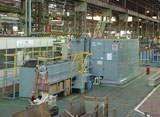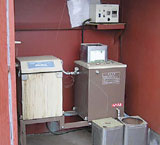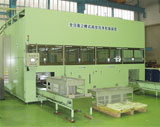Home > About Us > Corporate Social Responsibility > Sustainability Report > Environmental Sustainability Report 2005
| Environmental Management
Environmental Sustainability Report 2005 |
|||
| Environment-friendly Production (3) |
| [3] Reduction of Hazardous Substances |
Chemical substances that are used in our lives can damage the ozone layer, human health and the ecosystem unless appropriately controlled. Kobe Steel shall continue to properly maintain its environmental facilities; thoroughly control chemical use or reduce the use of chemical substances; and switch to safer alternative substances.
Yearly release and transfer of chemicals specified in the PRTR Law (parent company only)
Yearly release and transfer of chemicals specified in the PRTR Law (group companies)
|
|||||||||||||||||||||||||||||||||||||||||||||||||||||||||||||||||||||||||||||||||||||||||||||||||||||||||||||||||||||||||||||||||||||||||||||||||||||||||||||||||||||||||||||||||||||||||||||||||||||||||||||||||||||||||||||||||||||||||||||||||||||||||||||||||||||||||||||||||||||||||||||||||||||||||||||||||||||||||||||||||||||||||||||||||||||||||





